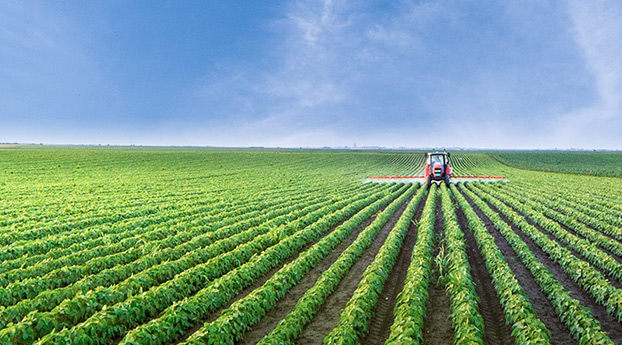Xinhuanet: The central government will invest 34 billion yuan to implement six major projects to solve the water problem in poor areas
Release time:2017-02-06 Views:262
Beijing, Feb. 6 (Xinhua Ensuring that the rural poor are lifted out of poverty by 2020 is the most arduous task to complete the building of a moderately prosperous society in all respects. In 2016, the Ministry of Water Resources made all-out efforts to promote targeted poverty alleviation in an all-round fight against poverty. Statistics show that in 2016, 832 national-level poverty-stricken counties were allocated a total of 34 billion yuan of central investment in water conservancy construction to support the construction of rural water conservancy infrastructure. The four counties of Fengdu, Wulong, Chengkou and Wuxi of Chongqing designated by the Ministry of Water Resources successfully completed their annual tasks, helping Fengdu and Wulong achieve poverty alleviation as scheduled by the end of 2016.
At the beginning of 2016, the Leading Group for Poverty Alleviation under The State Council listed water conservancy poverty alleviation and development as one of the top ten poverty alleviation tasks in the 13th Five-Year Plan period and put forward specific tasks. In order to implement the central government's decision and arrangement on poverty alleviation, the Ministry of Water Resources attaches great importance to speeding up the construction of "six major projects" for poverty alleviation in the water conservancy industry, focusing on launching a five-in-one battle of poverty alleviation in the industry, fixed-point poverty alleviation, regional connection, pairing support and construction of old areas.
In order to make overall plans for water conservancy poverty alleviation work in 2016 and the 13th Five-Year Plan period, the Ministry of Water Resources, in accordance with the problem-oriented and goal-oriented requirements, planned top-level design and accelerated the improvement of the policy planning system. It has formulated a series of plans, including the National Special Plan for Poverty Alleviation by Water Conservancy during the 13th Five-Year Plan Period, the Ministry of Water Resources Designated Work Plan for Poverty Alleviation, and the Overall Implementation Plan for Poverty Alleviation by Water Conservancy in the Yunnan, Guangxi and Guizhou Rocky Desertification Areas, and made specific arrangements for the key projects, and the allocation of funds for poverty alleviation by water conservancy during the 13th Five-Year Plan Period. At the same time, the Ministry of Water Resources jointly issued the Opinions on Strengthening Financial Support for Water Conservancy Poverty Alleviation and Development with the China Development Bank, and the Guiding Opinions on Effectively Improving the Poverty Alleviation Work of Reservoir Migrants with the National Development and Reform Commission and the Ministry of Finance. In conjunction with the Poverty Alleviation Office of The State Council, it issued the Guiding Opinions on the Implementation of Water Conservancy Action for Poverty Alleviation and Development and other program and policy documents.
It is understood that the construction of major water conservancy projects, rural drinking water safety consolidation and improvement project, farmland water conservancy facilities construction project, flood control, drought and disaster reduction protection project, soil and water conservation and ecological construction project, rural small hydropower and migrant poverty alleviation project and other poverty alleviation "six projects" with the characteristics of the water conservancy industry are going full speed ahead, and the water conservancy has played a prominent role in poverty alleviation. In 2016, 12 projects involving poor areas, including the Huangjiawan Reservoir in Guizhou, Agang Reservoir in Yunnan, Tuoying Reservoir and irrigation areas in Guangxi, were under construction. A total of 8.6 billion yuan will be allocated for the project to consolidate and improve drinking water safety in rural areas, which will help 13.5 million people secure drinking water. In poor areas, construction began on extending supporting facilities and water-saving projects in 64 large irrigated areas, and on upgrading and upgrading 29 large pumping stations. In combination with the development of advantageous rural industries, the construction of supporting facilities for five small water conservancy projects focused on registering poor villages was carried out, covering more than 300 poor counties, more than 4,000 poor villages, and more than three million poor people. We accelerated the construction of sluice reinforcement projects for 89 dangerous reservoirs in poor areas, including the Xiaopaiwu Reservoir in Hunan Province and the Longshan Sluice Gate in Henan Province. We supported the construction of 49 medium-sized reservoirs in five provinces in Southwest China and other poor areas, and supported the construction of 117 small reservoirs in poor areas in central and western China. The central government invested 3.17 billion yuan in various soil and water conservation projects in poor areas, involving 214,300 poor households and 1,831 poor villages in 432 poor counties, benefiting 848,400 poor people. In Shaanxi and other six provinces, the central government allocated 300 million yuan from the central budget to pilot small hydropower projects for poverty alleviation, and invested 74,300 kW in the construction of poverty alleviation power stations, which will benefit more than 20,000 registered poor households once completed. A total of 6 billion yuan will be allocated to 455 impoverished counties to help them overcome poverty, and it is estimated that more than 200,000 impoverished immigrants have been lifted out of poverty.
The Ministry of Water Resources has officially issued the National Poverty Alleviation Plan for water resources during the 13th Five-Year Plan period (2016-2020) in order to properly plan poverty alleviation and ensure that the poor will be lifted out of poverty by 2020. The plan targets 14 contiguous poverty-stricken areas and key counties outside the areas for poverty alleviation and development. While continuing to advance the construction of projects to consolidate and improve drinking water safety in rural areas, farmland water conservancy projects, flood control and disaster reduction projects, water resources development and utilization projects, soil and water conservation and ecological improvement, and rural hydropower projects, Efforts will also be made to improve the capacity of community-level water conservancy industries and water-related management, and to build a water security system for poverty-stricken areas that is compatible with the building of a moderately prosperous society in all respects.
Author: Editor: Yang Fei

















